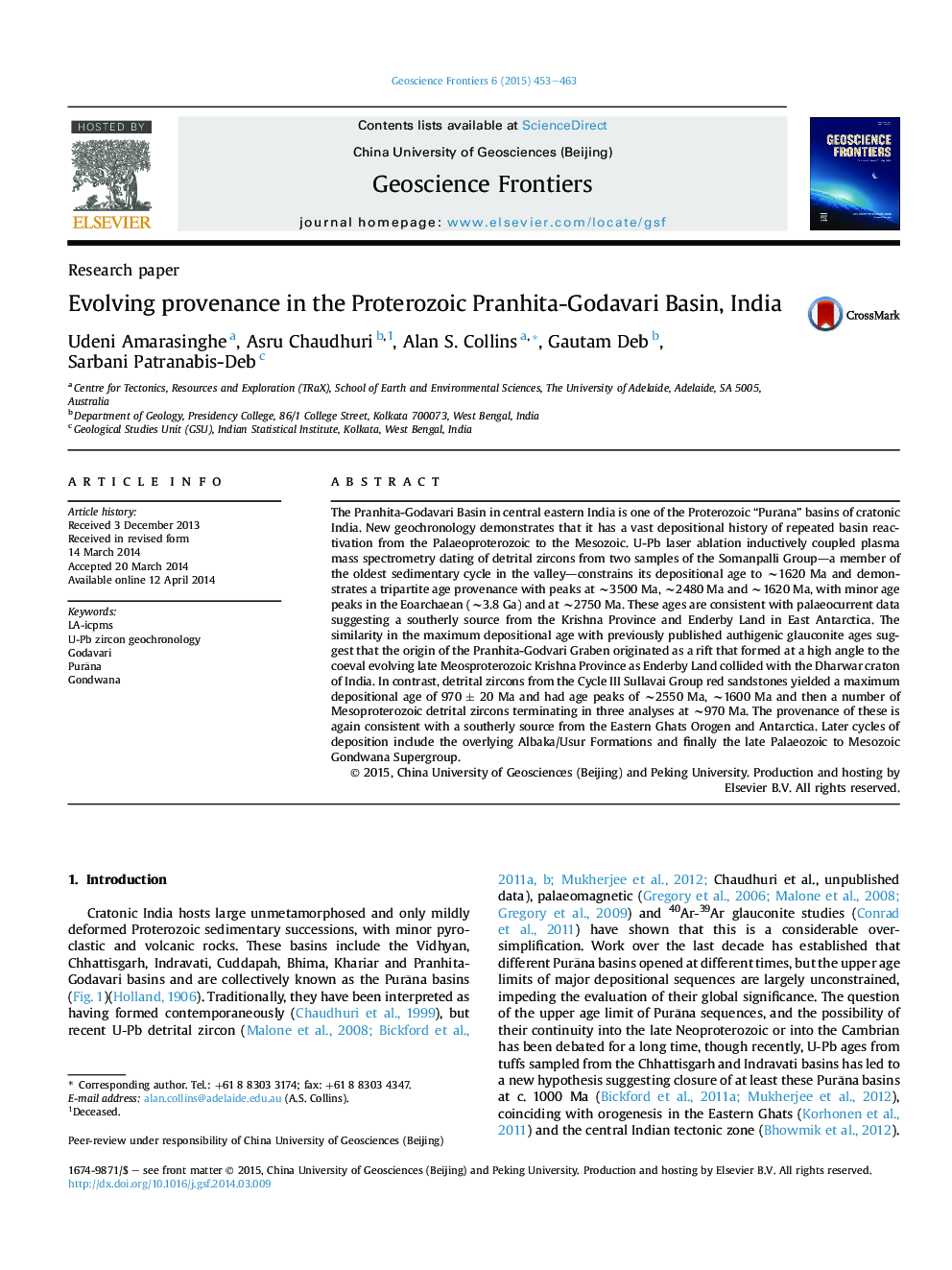| کد مقاله | کد نشریه | سال انتشار | مقاله انگلیسی | نسخه تمام متن |
|---|---|---|---|---|
| 4681622 | 1348862 | 2015 | 11 صفحه PDF | دانلود رایگان |
• The Somanpalli Group was deposited at ∼1620 Ma, the Sullavai Group was deposited after 972 ± 20 Ma.
• The Somanpalli Gp. has a tripartite age-provenance with peaks at ∼3.5 Ga, ∼2.48 Ga and ∼1.62 Ga.
• The Somanpalli Gp. has a significant component of zircons dating back to ∼3800 Ma.
• The Sullavai Gp. has age maxima at ∼2550 Ma, ∼1600 Ma and then some Mesoproterozoic detritus, with 3 analyses at ∼970 Ma.
• The Pranhita-Godvari Basin formed as a rift, perpendicular to the Krishna Orogen as Enderby Land collided with the Dharwar.
The Pranhita-Godavari Basin in central eastern India is one of the Proterozoic “Purāna” basins of cratonic India. New geochronology demonstrates that it has a vast depositional history of repeated basin reactivation from the Palaeoproterozoic to the Mesozoic. U-Pb laser ablation inductively coupled plasma mass spectrometry dating of detrital zircons from two samples of the Somanpalli Group—a member of the oldest sedimentary cycle in the valley—constrains its depositional age to ∼1620 Ma and demonstrates a tripartite age provenance with peaks at ∼3500 Ma, ∼2480 Ma and ∼1620 Ma, with minor age peaks in the Eoarchaean (∼3.8 Ga) and at ∼2750 Ma. These ages are consistent with palaeocurrent data suggesting a southerly source from the Krishna Province and Enderby Land in East Antarctica. The similarity in the maximum depositional age with previously published authigenic glauconite ages suggest that the origin of the Pranhita-Godvari Graben originated as a rift that formed at a high angle to the coeval evolving late Meosproterozoic Krishna Province as Enderby Land collided with the Dharwar craton of India. In contrast, detrital zircons from the Cycle III Sullavai Group red sandstones yielded a maximum depositional age of 970 ± 20 Ma and had age peaks of ∼2550 Ma, ∼1600 Ma and then a number of Mesoproterozoic detrital zircons terminating in three analyses at ∼970 Ma. The provenance of these is again consistent with a southerly source from the Eastern Ghats Orogen and Antarctica. Later cycles of deposition include the overlying Albaka/Usur Formations and finally the late Palaeozoic to Mesozoic Gondwana Supergroup.
Figure optionsDownload as PowerPoint slide
Journal: Geoscience Frontiers - Volume 6, Issue 3, May 2015, Pages 453–463
